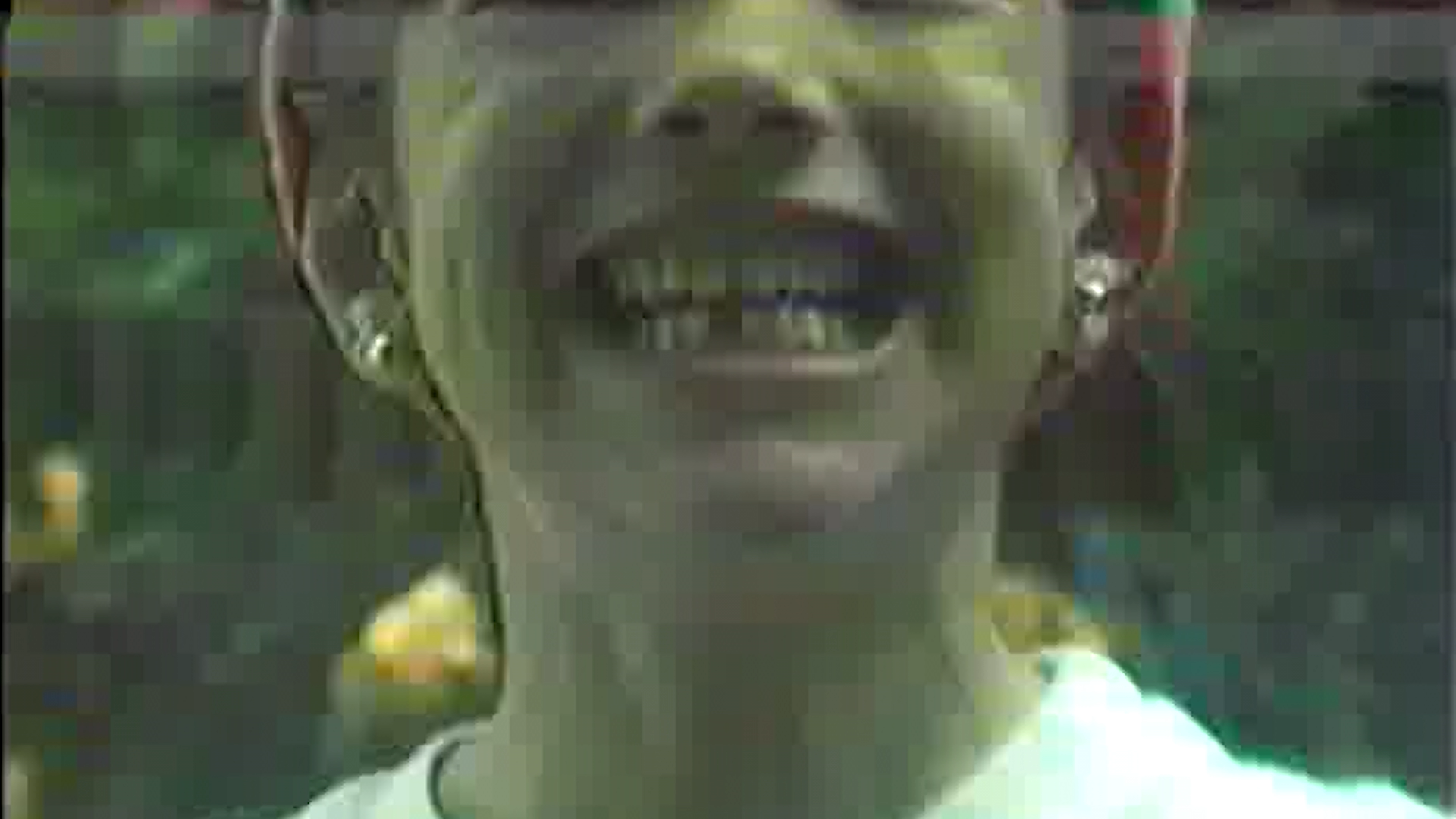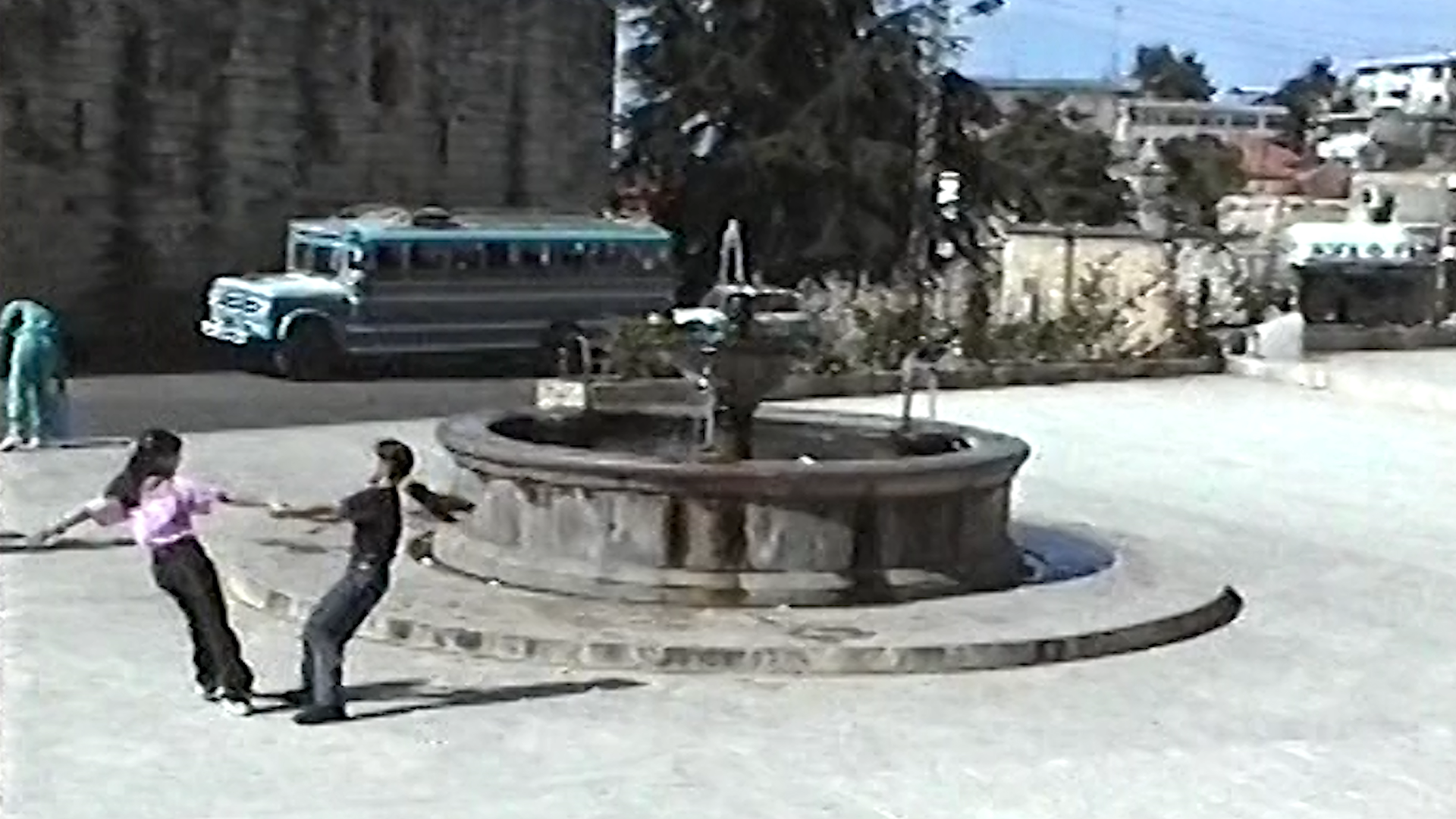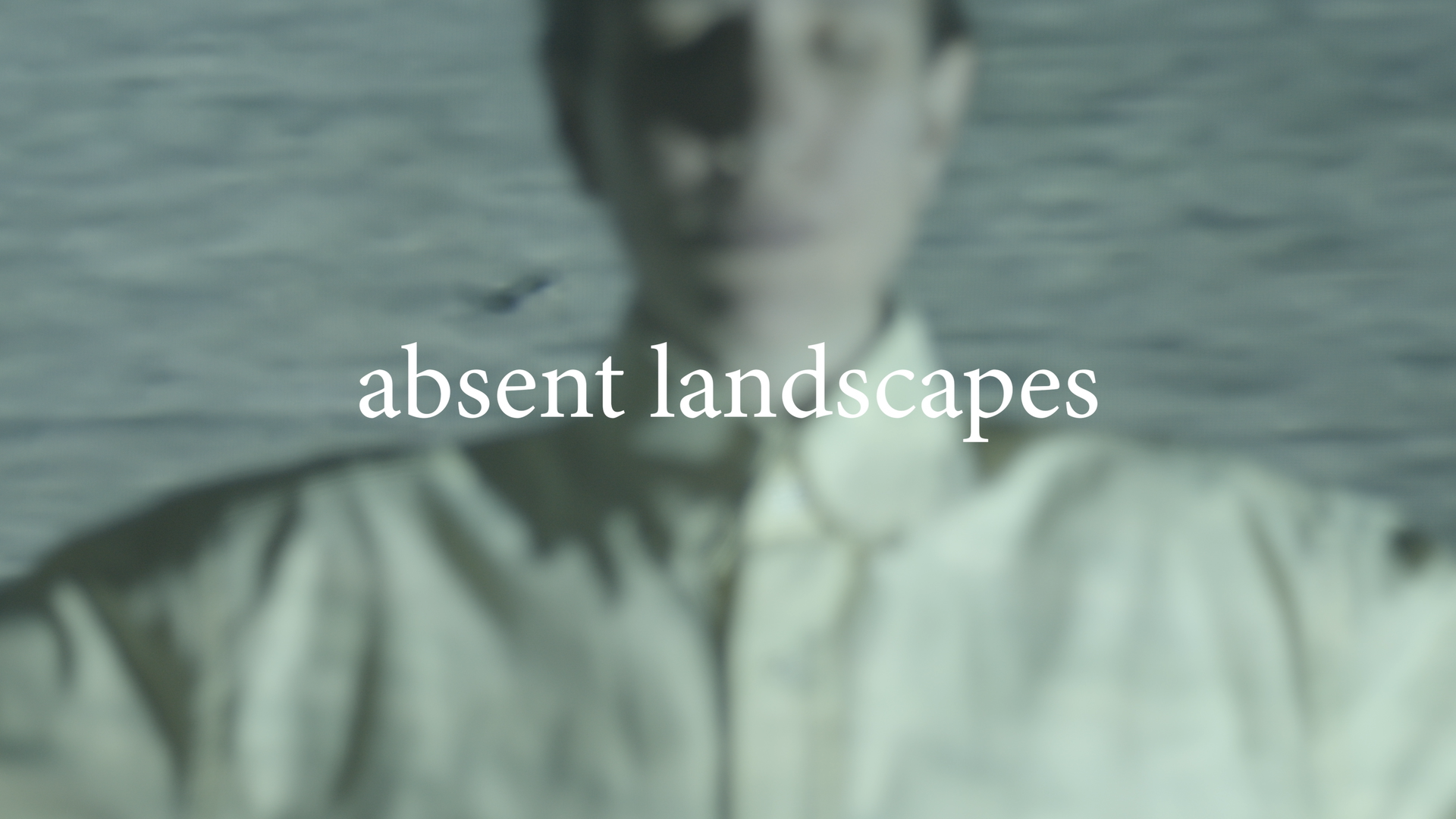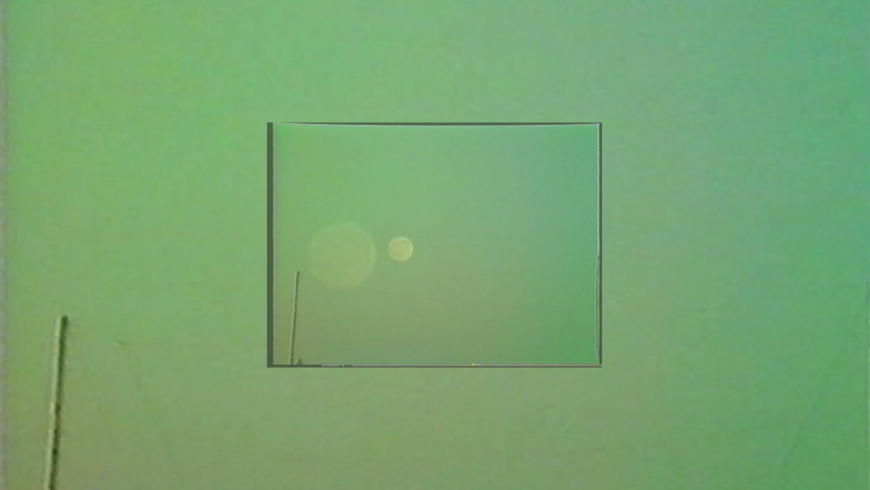What we’ll always have is something we lost
Reman Sadani
Artist Reman Sadani expands on themes of grief, loss and memory presented within Myriam Rey's 2023 FVU commission absent landscapes.
Projects
What we’ll always have is something we lost
What we’ll always have is something we lost
In the snow, the dry outline of my mother
Promise me you won’t vanish again, I said
She lay there awhile, thinking it over
One by one the houses turned off their lights
I lay down over her outline, to keep her true
Together we made an angel
It looked like something being destroyed in a blizzard- Ocean Vuong, excerpt from ‘Snow Theory’ in Time Is a Mother.
A friend gifted me Ocean Vuong’s poetry collection Time Is a Mother on my first birthday after having lost my father. I buried the book among other titles on the bottom shelf. I knew that Vuong wrote the poems to mourn his late mother, Hong, whom I encountered at first in his debut novel On Earth We’re Briefly Gorgeous. When I finally gathered the courage to read the collection, two years later, I was troubled by the neatness of the blurb. ‘Vuong contends with personal loss’. By then, I had encountered the expression so many times that it had lost significance.
In frustration, I trace the etymology of ‘contend’. It is derived from the Latin contendere: con (with) + tendere (to extend outward, stretch, spread out, aim). I close my eyes and stretch my arms out, mimicking Vuong who lays on the ground of the poem to preserve what’s left of his mother. Loss, it seems, extends with Vuong and I. Or perhaps, we extend with it.
When I received the news that my father is gone, I crawled under a duvet and laid there for hours, eyes wide open. I replayed every possible memory, until I could finally pull myself out of the room. In my small flat, familiar things turned strange. Rooms were larger than usual, and voices distant. Pieces of furniture conspired to shuffle a few inches apart. Everything called for reconfiguration.
Soon, flowers and pots of food arrived to bring back some sense of continuity. But with time they become less frequent, and you start to hear an unspoken expectation to ascend back to normality. How do you return, though, when disorientation blocks your way?
My body is a big basket, full of traces that the departed had left.1
In the introduction to Queer Phenomenology, Sara Ahmed asks: ‘how is it that we come to find our way in a world that acquires new shapes, depending on which way we turn?’2 We are oriented when we have a sense of direction and relation to our surroundings. That way we know where to go and what to face. We turn toward things that affect and move us, and in doing so, we take different positions on them.3 But we occasionally lose our sense of place and fail to turn. ‘If orientation is about making the strange familiar through the extension of bodies into space, then disorientation occurs when that extension fails,’4 according to Ahmed. In other words, when confidence in the ground is absent, ‘what is “here” becomes strange’ and the body undone shatters into small pieces.5
Vivian Sobchack describes getting lost as an experience of being in ‘a contextless context’.6 External reference points disappear, and the body has nothing to measure itself relative to. Sobchack reaches to different accounts in texts and films to outline three shapes and temporalities of the experience of ‘being lost’. She begins with one that is round and oriented to the past, taking the case of Sigmund Freud who is overcome by an ‘uncanny’ feeling on a hot summer afternoon. In a quiet Italian town, Freud loses his way, and follows a route that takes him back to the same street several times. All he can find there are small houses with female figures painted on windows. Freud is overwhelmed by the involuntary nature of repetition and feels helpless.7
Another instance is when one loses sense of the ground and gets ‘temporally lost’ in the present not knowing exactly where one is. This spatiotemporal lack of grounding disrupts one’s sense of positioning and self-identity and can manifest in a bodily sensation of ‘vertigo’ as space becomes ungrounded and the present elongated.8
The third instance is a mundane one, where you’re not groundless or directed to the past, but you’re simply unsure how to get to your destination. Unlike the previous two, the movement is linear and directed toward a specific endpoint but happens against an ‘ambiguous landscape’ often dotted with obstacles.9 While resolution is possible here, the release from the present is deferred.
Getting lost can itself become a familiar feeling and take you in some direction. For Sara Ahmed, orientation is as much about feeling home (negotiating the familiar and unfamiliar) as it is about finding our way around. She contemplates the verb dwell to think of orientation as a dwelling, requiring both time (to linger) and space (to make room).10
Who returns your touch?
If you were blindfolded in a room, you might orientate yourself by identifying the left and right bearings of your body. Habitual memory might then come to your aid helping you navigate the space.11 Or you might run your hands across an object that releases a map of the entire room. Edmund Husserl describes the embodied experience of space as an ‘open circuit’ between the body and the world.12 The body touches and is touched, accumulating impressions that enfold like a second skin.
Grief, on the other hand, disrupts the habitual world and dislodges the anticipatory structure of perception and activity. It loosens a web of interconnected relations rooted in the embodied experience of the world, rendering certain objects and sites indeterminate and strange. ‘It is not just that one cannot find a path to follow; the paths have gone.’13 In this state of disorientation, one perceives two desynchronised strands of time – an ongoing past and an alienated present.14
Take for instance the memory of hands, pulling the exact number of plates out of a cupboard every time you sit for a meal with family. One day, one of these plates is surplus to requirements, a mathematical error. No one dares to lay it out. It belongs to the departed. You remove it out of sight as fast as you can. You might leave it peculiarly close to an edge, hoping it would fall and smash.
To extend with loss.
Let me try to return to Vuong’s poem Snow Theory once more. Vuong lays inside the ‘outline’ of his mother to reinhabit the space she once dwelled in. The outline carries the memory of a contact between two skins; the inside of the mother’s body impressing itself onto the surrounding space, while also receiving the touch of snow. By inhabiting the interior of the outline, Vuong returns to a womb-like setting. From there, he reorients himself, his legs and arms extend through the outline breaking it open. ‘Together we made an angel’.15

A still from absent landscapes (d. Myriam Rey, 2023).
absent landscapes, Myriam Rey’s latest short film, opens with a family gathering in Syria. A woman’s voice advises: “No, it’s further behind […] Gosh, you must have to travel far?” almost warning us that to engage with the flat images requires a plunge further in. Myriam’s late father, the videographer behind most of the family videos featured, scans the scene to locate the child, Myriam, who poses in front of a flower bush. She proceeds to the camera with a smile and reveals a missing tooth. From this gap, a montage unfolds of VHS tape footage from family holidays across Lebanon, Syria and France. In the present time of the film, Myriam appears in front of the camera enveloped by the projected footage. She holds her arms out and spins into the projected light; to embrace her father and return his gaze.

A still from absent landscapes (d. Myriam Rey, 2023).
The hands of a cousin receive Myriam, the adult, and draw her further in. A slowed-down video shows Myriam and her cousin, as children, playing by a fountain. They interlace their fingers, with arms stretched out in each other’s direction. They move in circles across the ground, increasing the momentum gradually. Myriam comes in the voice-over to state: I carry landscapes that leave traces. The landscape is the body here. The traces are impressions that take the form of an encounter (touch). The two girls are like an open circuit. Their mutual touch leaves impressions and sensations.
In the wake of loss, the body stands in the middle of a stream, the back turned to the inflow destination. The debris is extricated. ‘The body might be reoriented if the hand that reaches out finds something to steady an action. Or the hand might reach out and find nothing, and might grasp instead the indeterminacy of air.’16 Vuong and Rey search for the traces of the departed. Whether it's an imprint in snow or a box of VHS tapes, they move toward them and inhabit them even at the risk of finding nothing.
To be redirected.
May 15 2023
I’m in Beirut. I had never been here before. I try to look less of a tourist by pretending to know where I’m going all the time. My dreams are quite vivid during this short stay.
In one dream, my father rushes into a university hall followed by a group of students. His attire is quite relaxed. A badly ironed chequered shirt missing his usual necktie. I am amazed that the man is back to life. When did it happen? He glances at me from a pile of paper. There is no time to explain, his glance reads. The sleep crust around his left eye suggests that he’s awakened not so long ago. He leaves with his students, and the dream ends there.
I start to feel the ground beneath.
--
Reman Sadani is a moving image artist based in London. She is the recipient of the 2020 JFVU Film Awards. Her films have screened in London Short Film Festival (London), Pavilion (Leeds), Safar Film Festival (London), Mizna Arab Film Festival (Minneapolis), Open City Documentary (London), Aesthetica Short Film Festival (York), Arab Women Film Festival (Rio de Janeiro), MoMa Modern Mondays (New York), Jerwood FVU Film Awards (London).
Footnotes
1Iman Mersal, “It Seems I Inherit The Dead” in Mamarr Mu'tim Yasluh li Ta'allum al-Raqs (A Dark Passageway Is Suitable for Learning to Dance), Dar Sharqiyat al-Qahira, Cairo, 1995.
2Sara Ahmed, Queer Phenomenology, Duke University Press, Durham and London, 2006, p.2.
3Sara Ahmed, Queer Phenomenology, p.27-28.
4Sara Ahmed, Queer Phenomenology, p.11.
5Sara Ahmed, Queer Phenomenology, p.157.
6Vivian Sobchack, Carnal Thoughts, University of California Press, Berkeley, Los Angeles and California, 2004, p.19.
7Vivian Sobchack, Carnal Thoughts, p.21.
8Vivian Sobchack, Carnal Thoughts, p.25.
9Vivian Sobchack, Carnal Thoughts, p.28.
10Sara Ahmed, Queer Phenomenology, p.20-21.
11Sara Ahmed, Queer Phenomenology, p.6-7.
12Edmund Husserl cited in Sara Ahmed, Queer Phenomenology, p.2.
13Matthew Ratcliffe, “Towards a phenomenology of grief: Insights from Merleau-Ponty,” European Journal of Philosophy, Volume 28, Issue 3 p.657-669, 2019.
14Thomas Fuchs, “Presence in absence: The ambiguous phenomenology of grief” In Phenomenology of The Cognitive Sciences, Volume 17, p. 43-63, 2018.
15Ocean Vuong, “Snow Theory” in Time Is a Mother, Jonathan Cape, 2022, p.5.
16Sara Ahmed, Queer Phenomenology, p.157.



